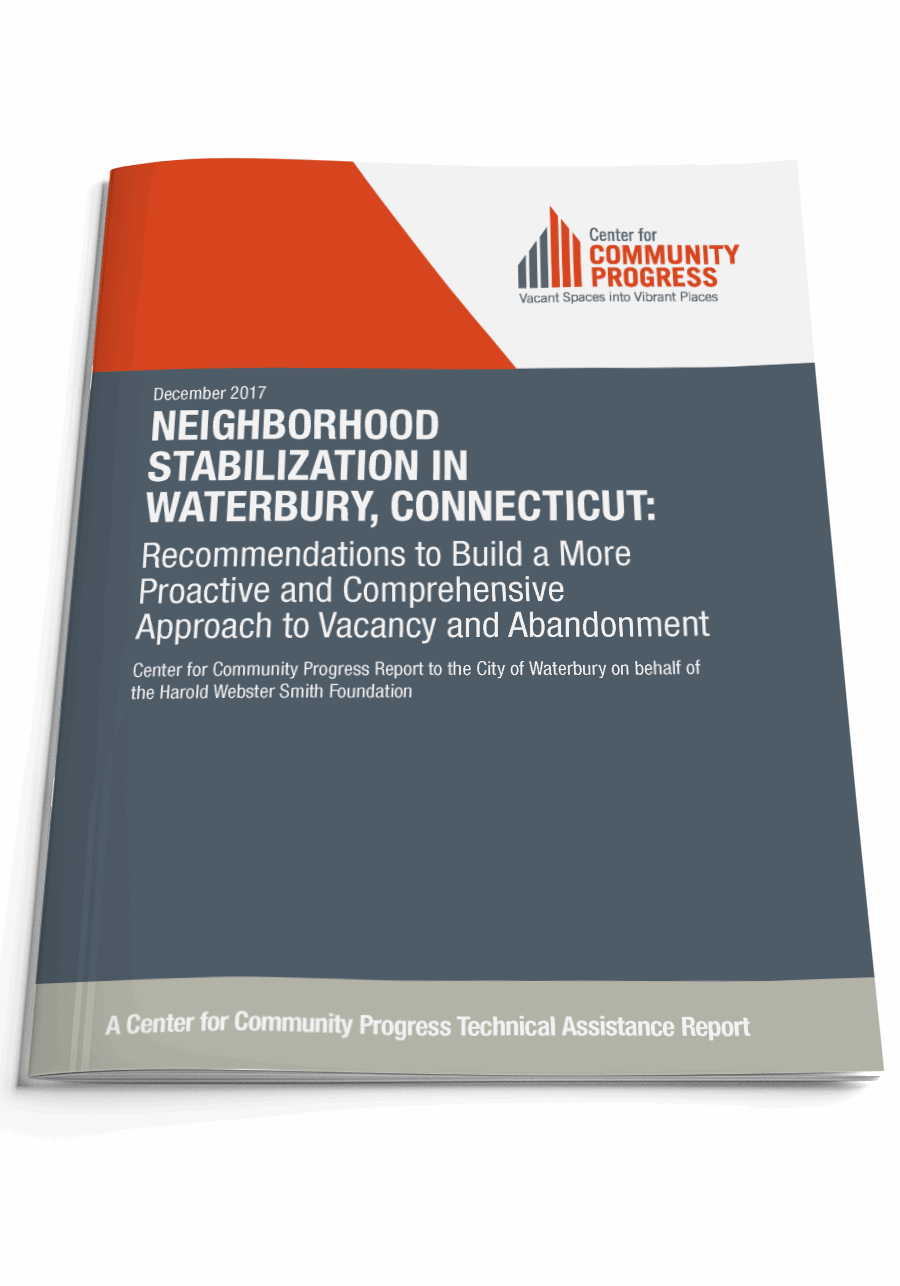Neighborhood Stabilization in Waterbury, Connecticut
Recommendations to Build a More Proactive and Comprehensive Approach to Vacancy and Abandonment
Topic(s): Code Enforcement System, Land Banks, Local Analysis, Parcel Data & Neighborhood Markets, Property Tax System
Published: December 2017
Geography: Connecticut
Author(s): Center for Community Progress
In 2017, the City of Waterbury, Connecticut and the Harold Webster Smith Foundation engaged the Center for Community Progress to provide an assessment of the existing systems, policies, and tools used to address vacant and abandoned properties in Waterbury, Connecticut.
Our assessment provides the City and the Foundation with a series of observations and recommendations for improvement and better alignment of public systems and practices that impact the life-cycle of vacant and abandoned property. The City systems and practices reviewed by Community Progress include: data collection and management practices, housing and building code enforcement system, delinquent property tax enforcement system, and current property acquisition and disposition practices. We developed the following six key takeaways regarding the City’s approach to vacant and abandoned properties:
- City leadership has the political will to prioritize neighborhood stabilization and revitalization.
- The City has developed an excellent foundation for cross-agency collaboration.
- There is a critical need for better parcel data collection and management practices to inform efforts to address vacant and abandoned properties.
- Complaints to the City regarding vacant and abandoned properties are addressed, but challenges in the most distressed neighborhoods persist.
- The City’s reluctance to own property is a barrier to developing a more comprehensive approach to vacancy and abandonment.
- There is a need for more intentional resident engagement in planning and neighborhood stabilization strategies—and a need for more neighborhood planning.

Topic(s): Code Enforcement System, Land Banks, Local Analysis, Parcel Data & Neighborhood Markets, Property Tax System
Published: December 2017
Geography: Connecticut
Related Publications
Other Related Content
Subscribe to join 14,000 community development leaders getting the latest resources from top experts on vacant property revitalization.
